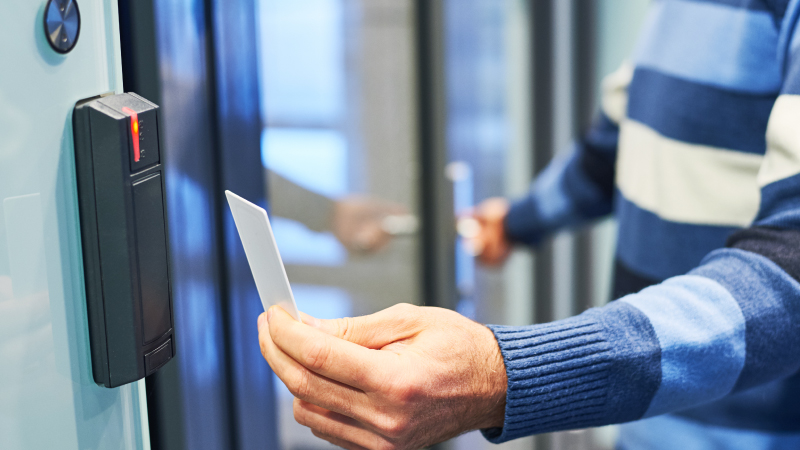Choosing an access control system for a business can be a tough decision, especially in the rapidly expanding cannabis industry. Cannabis businesses have varying needs depending on their operations and the different regulations that govern them in each state.
The primary goals of the access control system are to manage and control access to the business, as well as to highly restricted areas within the facility. In the cannabis industry, owners can use these systems to secure their facilities, prevent diversion of cannabis and cash, and to safeguard employees, customers, and visitors. The access control system tracks the entry and exit of authorized users and prevents access by those who could be a threat to the cannabis business.
Access Control Devices and Equipment
In its simplest form, an access control system grants access to those who have identified themselves with the proper credentials. Since there are a variety of ways to verify both identity and credentials, employing more than one authentication factor ensures that only the right people are granted access. This process, known as two-factor authentication, increases facility security and aids in preventing theft.
Access control systems often also feature two-factor authentication for highly secured areas. This verification process makes use of two distinct authentication credentials to determine that a user is who they claim to be. When compared to a single-factor authentication system, two-factor authentication provides an additional layer of security that makes fooling an access control system even more difficult.
Traditional access control systems consist of a variety of components, including readers and credentials. Readers are located outside of access control points and require a credential be presented to allow entry or exit. There are numerous combinations of readers and credentials that can be used at each access point. Common types of access control credentials include: PIN Codes; Proximity Access Cards; Biometrics; and Bluetooth or Near-Field Communication.
Types of Access Control Credentials
PIN Codes – When a PIN code reader is implemented at access control points, employees must enter a specific alphanumeric PIN code specific to the individual.
Proximity Access Cards – In an access control system that utilizes proximity access cards, each employee is issued a card specific to the individual. The proximity access card can be read without physically swiping the card, and users only need to hold the card near the reader to initiate access.
Biometrics – With biometric access control readers, a scan of the employee’s face, fingerprint, retina, or palm is used as the access credential.
Bluetooth and Near-Field Communication – While this is a relatively new form of access control credential, it is quickly growing in popularity. This method uses apps installed on smart phones or devices as the credential to authorize access when the user gets within close proximity of the secure door without physically touching any other security devices.
Compliance
While an access control system may not be required specifically by law, most cannabis regulations require that business owners keep access well-controlled on the premises. For example, California requires commercial-grade locking doors and established access control policies, but does not outright require an access control system. Similarly, in Colorado, cannabis businesses are required to install commercial-grade nonresidential locks at entrances and exits and maintain a log listing all individuals who enter limited access areas.
Though not mandated, cannabis businesses in both of these states, and in other states with similar requirements, should highly consider implementing an access control system. These systems can work with commercial-grade security devices, such as door contacts and transmitters, and can be installed on all doors leading into limited-access areas. This ensures that access is well-regulated and that a log of all access and access attempts are maintained for compliance purposes.
Before choosing an access control system, cannabis business owners should review the regulations in place in their area and consult with a security expert with experience in the cannabis industry. This ensures that the chosen access control system effectively secures the business while remaining in budget.
How Can Sapphire Risk Help?
Tony Gallo and the team of application writers and consultants at Sapphire Risk Advisory Group have written hundreds of access control system plans and standard operating procedures for cannabis business applications. Follow us on social media to stay up to date with more security best practices and cannabis industry updates!
- 3D Dispensary Security Tour
- Natural Medicine Security Plan for Colorado Psilocybin Application

- New Jersey: Cannabis Consumption Area Application

- Cannabis in the US Virgin Islands

- Case Study: New Jersey Cannabis Retailer

- Delivery Vehicle Security

- Crime Prevention Through Environmental Design (CPTED)

- Schedule III: Cannabis Regulatory Disruptions Ahead

- Perfect Your Delaware Cannabis Business License Application With a Security Consultant

- Our Story: Sapphire Risk Advisory Group

